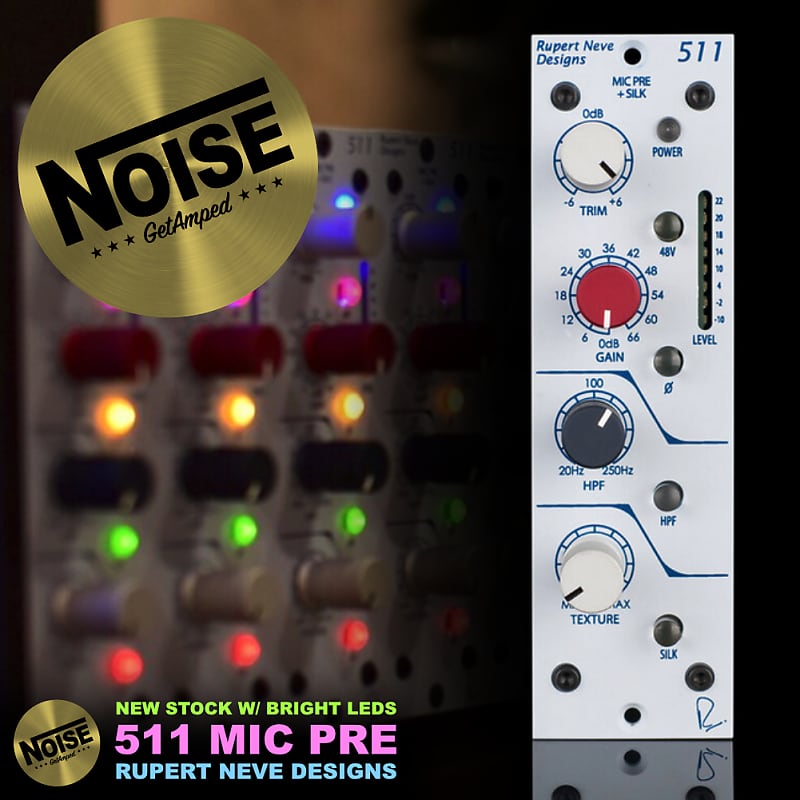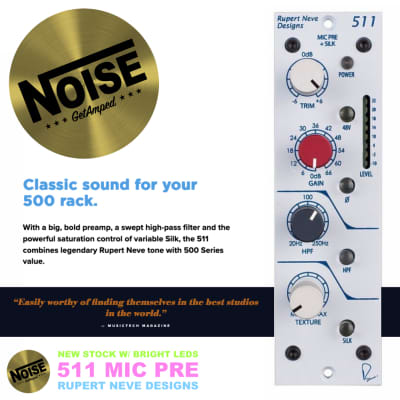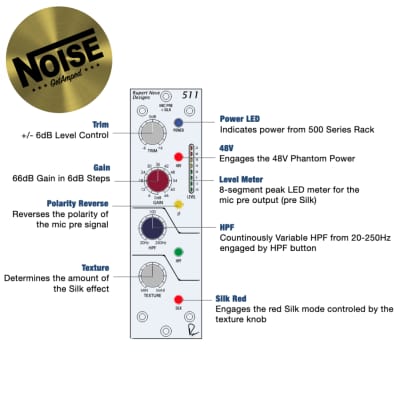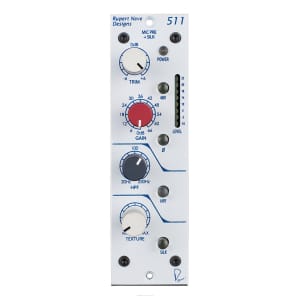With a big, bold preamp, a swept
high-pass filter and the powerful saturation control of variable Silk,
the 511 combines legendary Rupert Neve tone with 500 Series value.
One of the key features of the 511 is the Silk / Texture control. The
Silk circuit was initially developed for the original Portico series
mic preamplifiers, and was only a single switch – on or off – that added
a specified amount of musical, pleasing harmonic saturation to the
unit’s output stage.
Taking this concept one step further, the Texture knob is designed to adjust the actual amount of harmonic content from the source material.
So how does it work? By reducing negative feedback across the output transformer and adjusting this feedback’s frequency response, the Silk / Texture circuit provides the sweet, musical saturation found in Rupert’s legendary vintage designs – but with complete & precise control over the amount of classic tone you want.
GAIN
A 12-way precision rotary switch controls gain from 0 to 66 dB in 6 dB steps. When the Gain switch is set to Unity (0 dB), the 511 can handle a balanced input signal of more than +20 dBu without an input attenuator pad – this is a unique feature that allows the 511’s Silk circuit and other features to be applied to line-level sources.
TRIM
Continuously variable +/-6 dB control to fine-tune level.
+48V
Engages phantom power on the microphone input, as supplied by the 500 series rack.
LEVEL METER
An eight-segment LED bar-graph meter displays output level (pre-Silk). The color range proceeds from green for lower level signals, yellow for intermediate signals, and red for high levels. When the 511 is clipped, the highest red LED will hold longer depending on how far above the clip threshold the signal was.
POLARITY
Push button inverts the polarity of the signal path, and illuminates when engaged. The symbol “Ø” is often used to denote opposite polarity.
HIGH PASS FILTER
The high pass filter is continuously variable from 20-250Hz and engaged by the HPF switch, which illuminates when engaged. It is a valuable aid in any signal chain, but particularly so in a microphone preamplifier. Signals below the selected frequency are attenuated at a rate of 12db / octave, getting rid of proximity effect, building rumble, air handling, motor hum, etc.
SILK / TEXTURE
Pushing the Silk button engages the Silk Red circuit, which enhances harmonic content generated by the highs and high mids of your source. This adds a sparkly sheen to the top end, and is often ideal for sources including vocals, strings, pianos, and other acoustic instruments. With Silk / Texture engaged, the distortion characteristic and harmonic content of the unit are very reminiscent of many of Rupert’s class-A vintage designs. By manipulating the Texture control, the amount of Silk can be changed from essentially absent, to well beyond the amount of coloration found in vintage units.






